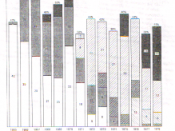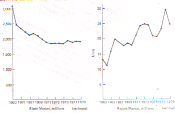The Gillette Company: Trac II
Jay E. Klompmaker
Charles M. Kummel
In July 1978, Mike Edwards, Brand Manager for TRAC II,� was beginning to prepare his marketing plans for the following year. In preparing for the marketing plan approval process, he had to wrestle with some major funding questions. The most recent sales figures showed that TRAC II had continued to maintain its share of the blade and razor market. This had occurred even though the Safety Razor Division (SRD) had introduced a new product to its line, Atra. The company believed that Atra would be the shaving system of the future and, therefore, was devoting increasing amounts of marketing support to this brand. Atra was launched in 1977 with a $7 million advertising campaign and over 50 million 42 rebate coupons. In less than a year, the brand achieved a 7 percent share of the blade market and about one third of the dollar-razor market.
Thus, the company would be spending heavily on Atra, possibly at the expense of TRAC II, still the number one shaving system in America.
Edwards was faced with a difficult situation, for he believed that TRAC II still could make substantial profits for the division if the company continued to support it. In preparing for 1979, the division was faced with two major issues:
What were TRAC II's and Atra's future potentials?
Most important, could SRD afford to heavily support two brands? Even if they could, would it be sound marketing policy to do so?
COMPANY BACKGROUND
The Gillette Company was founded in 1903 by King C. Gillette, a 40-year-old inventor, utopian writer, and bottle-cap salesman in Boston, Massachusetts. Since marketing its first safety razor and blades, the Gillette Company, the parent of the Safety Razor Division, had been the leader in the shaving...


